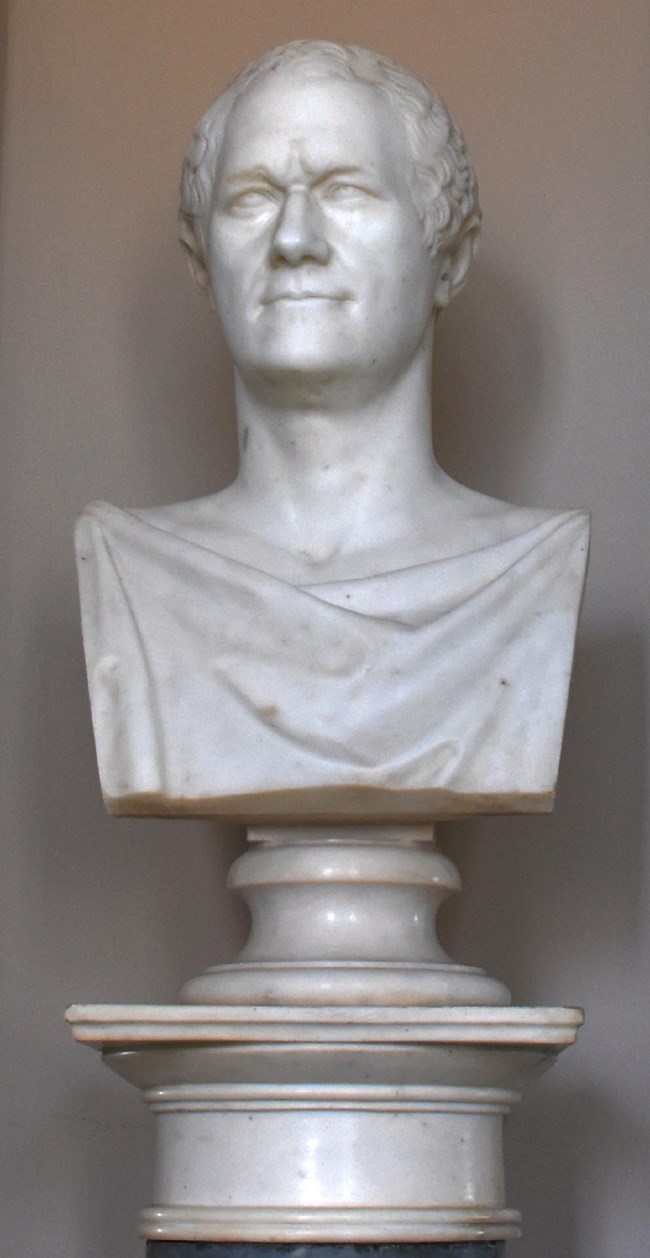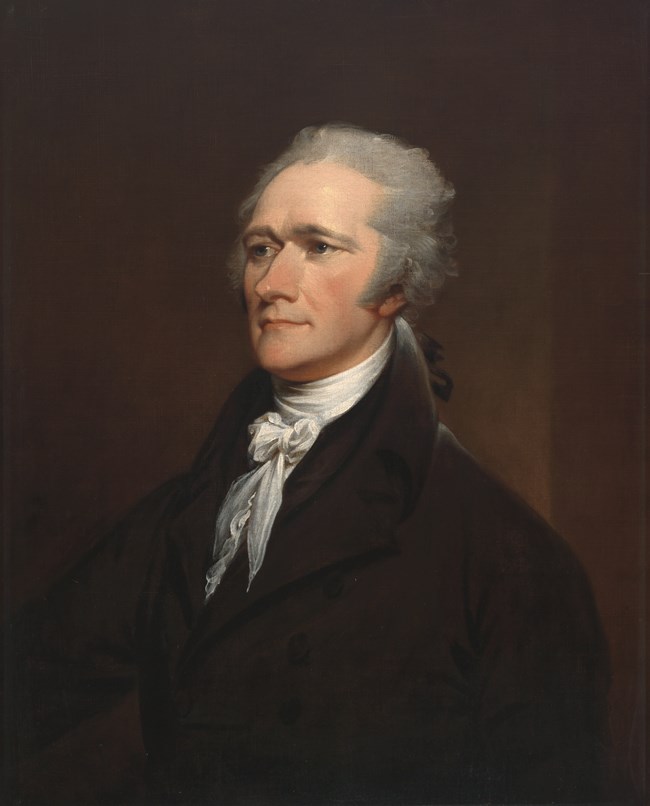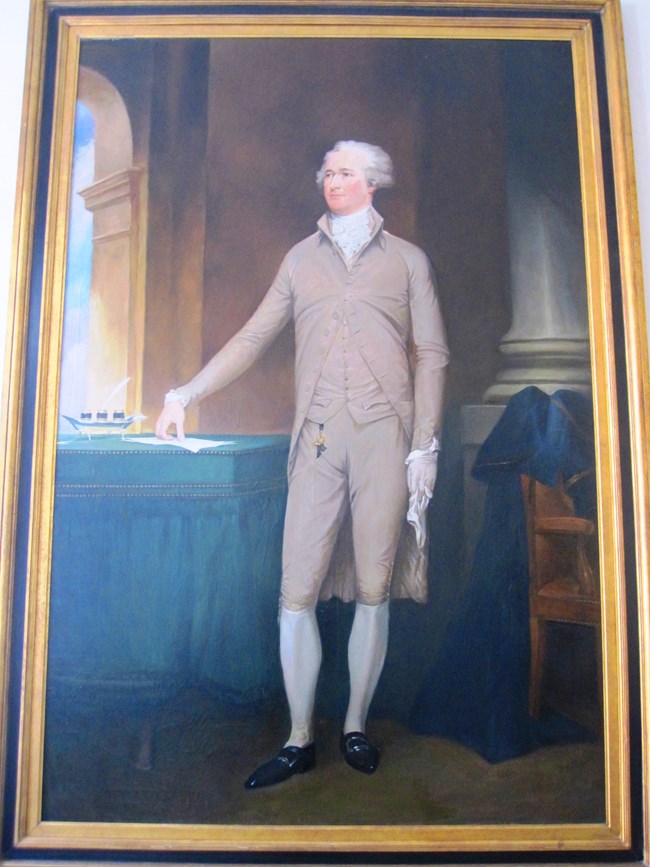Last updated: February 26, 2022
Article
Hamilton Grange Foyer Collection

NPS Photo
Marble Bust
Italian Neoclassical sculptor Giuseppe Ceracchi arrived in America in 1791 with a sense of awe for the new country. He spent the next two years creating busts of American Founding Fathers, including Alexander Hamilton, George Washington, and Thomas Jefferson. His plan was to enshrine these men with a “reputation distingué” --a distinguished reputation, and to preserve the ideals of “American liberty and independence”.
Ceracchi planned to use the busts to create a Neoclassical monument for the newly fledged nation. In a letter to Hamilton in 1792, he gave a thorough description of what he wished to create: a monument, 60 feet tall, with a 700-foot circumference. Washington would be featured in bronze atop a horse, surrounded by about a dozen other Founding Fathers, most of them 15 feet tall. To pay for this project, Ceracchi estimated a cost of about 50,000 guineas.
Ultimately, congress decided not to pursue the creation of this monument, citing a financial reluctance to participate in the project. A few years following, in March of 1796, Hamilton recorded in his cash book an expense for $620, for “this sum through delicacy paid upon Cherachi’s [sic] draft for making my bust on his own importunity & as a favour to him”. Hamilton received his bust, and it is unclear where he displayed it during his lifetime.
After his death, Hamilton’s bust aided in his remembrance. Some of the most well-known portraits of Hamilton that exist today, including one by John Trumbull in 1806, were painted posthumously, with the Ceracchi bust as the model. [more info on Trumbull portrait with the outstretched hand]

John Trumbull, 1806. National Portrait Gallery, Smithsonian Institution; gift of Henry Cabot Lodge.
After his death, Hamilton’s bust aided in his remembrance. Some of the most well-known portraits of Hamilton that exist today, including one by John Trumbull in 1806, were painted posthumously, with the Ceracchi bust as the model. [more info on Trumbull portrait with the outstretched hand]
Copies of the bust were created for use in public spaces where Hamilton held influence and made contributions. One copy was purchased for Thomas Jefferson and put on display in Monticello, Jefferson’s country home. The bust is still displayed opposite from Jefferson, a symbolic nod to the famous political and philosophical rivalry the two shared in life.
However, the original bust stayed in the Hamilton family until 1896. Elizabeth, Alexander’s widow, kept the bust until her death in 1854. Reportedly, it served as a focal point for her remembrance of him. As a visitor to Eliza recalled, she “always paused before it in her tour of the rooms, and leaning on her cane, gazed and gazed...” and remembered her late husband as “My Hamilton”.
This simple bust, depicting Hamilton in white marble with a soft smile and determined demeanor, was humble in comparison to Ceracchi’s vision to enshrine the Founding Fathers as colossi. It reveals that Hamilton was a human that left behind much at his death: a family, a career, and a grand stature in the American story.

NPS Photo
